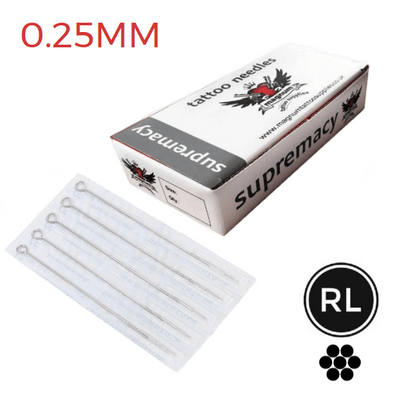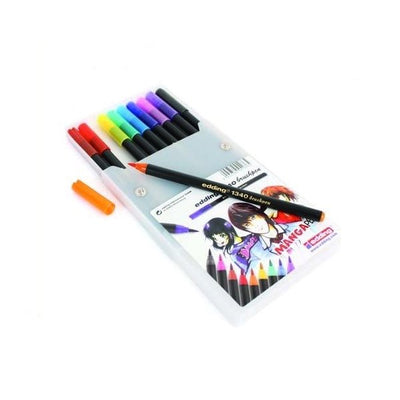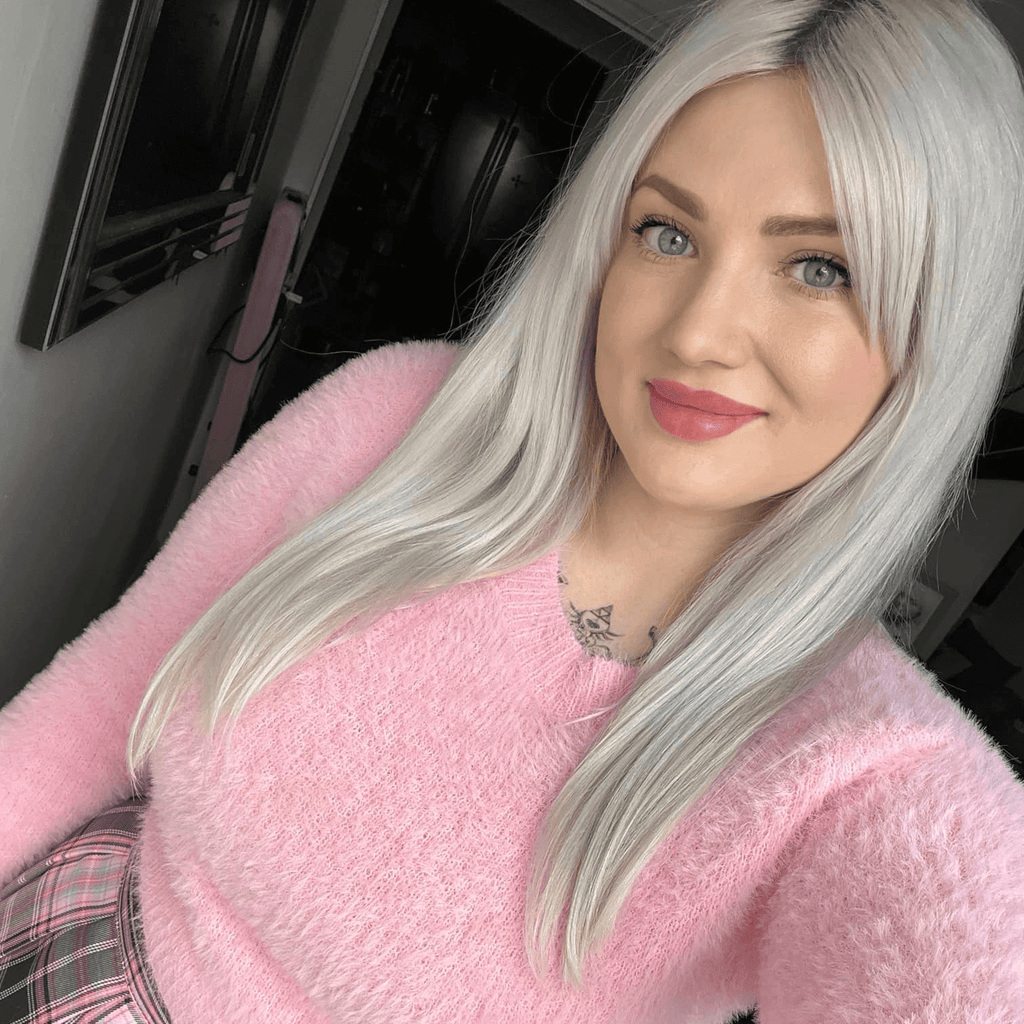Starting your tattoo journey with coil tattoo machines can feel overwhelming. There's a lot to figure out—from assembling the machine to understanding its intricate settings. It's not just about putting pieces together; it's about mastering the art to ensure every tattoo you ink is perfect.
As a beginner, the technicalities might seem daunting, but with the right guidance, you'll be creating beautiful artwork in no time. Let’s simplify this process and help you gain the confidence you need to succeed.
What is a coil tattoo machine?
A coil tattoo machine, often recognised for its buzzing sound during operation, is a traditional type of tattoo device that relies on electromagnetic coils to drive the needle. The machine consists of two coils, which, when energised, create a magnetic field that moves a spring-loaded armature bar up and down, thereby driving the attached needle to puncture the skin. This repetitive motion allows the needle to deposit ink into the skin’s dermis layer, creating the tattoo.
Coil machines are favoured for their durability and their ability to be finely tuned, making them highly versatile for a wide range of tattooing techniques, from shading to lining.
How do coil tattoo machines work?
Coil tattoo machines operate using an electromagnetic circuit that powers the movement of needles into the skin. When the tattoo machine is turned on, an electrical current flows through a pair of coils, creating a magnetic field. This magnetic field pulls down a spring-loaded armature bar, causing the attached needles to move downward and puncture the skin.
As the circuit breaks, the magnetic field collapses, and the armature bar springs back up, retracting the needles. This rapid up-and-down movement, which happens many times per second, allows the tattoo artist to embed tattoo ink into the dermal skin layer efficiently, creating the tattoo design.
Types of coil tattoo machines
Liner machines
These are built for precision and are used primarily for creating clean, crisp lines. Liner machines run at a higher speed and use fewer coils, typically with a tighter setup, which allows for more precise control and quicker ink application to the skin. The needles are arranged in a tighter configuration to produce sharp, distinct lines.
Shader machines
Shader machines are designed for shading and filling larger areas. They operate at a slower speed with a softer hit compared to liner machines. This allows the artist to layer ink smoothly and evenly without causing too much trauma to the skin. Shader machines typically have more coils or a different coil setup to accommodate their slower, more nuanced function.
Colour packer machines
These are similar to shader machines but are specifically designed to pack colour into the skin efficiently. They provide a stronger hit than shaders, enabling the artist to embed more pigment with each pass. This makes them ideal for vibrant, colourful designs that require solid blocks of colour.
All-purpose machines
Some coil machines are designed to be versatile enough to handle both lining and shading. These all-purpose machines can be adjusted by changing the power settings, the contact screw, and other components. While they offer flexibility, dedicated liners and shaders usually perform better for their specific tasks due to their specialised configurations.
Step-by-step guide on assembling a basic coil tattoo machine
Step 1: Gather your components
Make sure you have all the necessary parts laid out:
- Frame
- Coils
- Armature bar
- Contact screw
- Front and rear springs
- Binding posts
- Tube vise
- Screws and washers
Step 2: Install the coils
- Attach the coils to the frame using the mounting screws. Ensure the coils are securely fastened and aligned with the frame’s holes.
Step 3: Attach the armature bar and springs
- Connect the front spring to the top of the armature bar.
- Attach this assembly to the top of the coils. The armature bar should rest directly above the coils, with the front spring facing downward.
- Secure the rear spring to the bottom of the armature bar and ensure it lines up with the front spring on the contact screw.
Step 4: Set the contact screw
- Screw the contact screw into the front binding post until it touches the front spring.
- Adjust the contact screw to control the throw (the distance the needle moves up and down), which affects the machine’s speed and power.
Step 5: Assemble the binding posts
- Attach the rear binding post to the frame.
- Ensure that the contact points on both the front and rear binding posts are clean for optimal electrical conductivity.
Step 6: Install the tube vise
- Attach the tube vise to the frame. This component holds the tube and needle in place during operation. Ensure it is tightened enough to secure the tube but not so tight as to crush it.
Step 7: Connect the clip cord
- Attach the clip cord to the binding posts: one clip on the rear post and one on the front.
- Make sure the connections are secure and that there is no loose metal or exposed wires.
Step 8: Insert the needle and tube
- Insert the needle into the tube, ensuring it is correctly oriented and extends slightly beyond the tip.
- Slide the tube and needle assembly into the tube vise and adjust as needed to align the needle with the armature bar’s nipple.
Step 9: Final adjustments
- Power on the machine briefly to test the movement of the needle.
- Adjust the contact screw, speed, and power settings according to your needs and requirements of the tattoo you're performing.
Step 10: Sterilise and prepare for use
- Before using the machine on the skin, ensure all parts that come into contact with the client are sterilised properly to prevent infection.
Do coil tattoo machines hurt more?
The perception of pain during tattooing can vary widely from person to person, but generally, coil tattoo machines are thought to cause more discomfort compared to other types of tattoo machines, like rotary machines. This is primarily due to the mechanism of action; coil machines operate with a hammer-like motion that can be more forceful and less consistent.
This tends to make the tattooing process slightly more painful and can also cause more skin irritation and swelling. However, the skill of the tattoo artist and the individual’s pain threshold play significant roles in the overall experience.
How to clean a coil tattoo machine
Cleaning a coil tattoo machine is crucial for maintaining hygiene and ensuring its optimal performance. Here’s a step-by-step guide to cleaning your coil tattoo machine:
- Disassemble the machine: Begin by unplugging the machine from any power source. Remove the needle, tube, and grip, and set them aside for separate cleaning.
- Clean the components: Use disposable gloves to avoid contamination. Clean the tube, grip, and any other parts that come into direct contact with the skin or ink using hot water and an antibacterial soap. For parts that can be sterilised, use an autoclave. For others, especially those sensitive to high heat, use a cold sterilisation solution following the manufacturer’s guidelines.
- Wipe down the machine: Use disinfectant wipes to clean the body of the tattoo machine. Carefully wipe around the coils, the armature bar, and the frame, ensuring not to saturate any part with liquid. Avoid using excess liquid that could seep into the machine and damage the coils or electrical components.
- Disinfect with alcohol: After wiping, use a cloth dampened with isopropyl alcohol to go over the machine. This will help remove any residual tattoo ink or debris and disinfect the surfaces without causing rust.
- Lubricate moving parts: Once the machine is clean and dry, apply a small amount of machine oil to the armature bar and the contact screws to ensure smooth movement. Avoid over-lubricating, as this can attract dust and ink particles, leading to buildup.
- Reassemble and test the machine: Carefully put all the parts back together. Reattach the clean tube, grip, and a new sterilised needle. Connect the machine to a power source and test it on a practice skin or rubber sheet to ensure it's working correctly.
- Regular maintenance: Regularly check for any rust, wear, or electrical issues. Replace any rusty or worn-out parts to keep the machine in good working order.
Rotary vs coil tattoo machine
When comparing rotary and coil tattoo machines, each offers distinct advantages tailored to different styles and techniques of tattooing.
- Rotary tattoo machines: These tattoo machines are known for their quiet operation and low vibration. They use a rotary motor to move the needle, which results in a smoother, more consistent motion. This makes them particularly good for shading and colour packing, providing a gentler experience for the client. Rotary tattoo machines are lighter and easier to handle, reducing hand fatigue during long sessions. The simplicity of their design also makes them easier to maintain and clean. However, they might not offer the same level of precision in line work that some tattoo artists achieve with coil machines.
- Coil tattoo machines: Traditional in the tattooing world, coil machines are favoured for their precision and versatility. They use electromagnetic coils to drive the needle, providing a powerful "punch" that is effective for creating crisp, defined lines. This makes them ideal for intricate line work and stippling. They are also more adjustable in terms of needle depth and speed, which can be varied by changing the voltage. However, coil machines are noisier and vibrate more, which can increase discomfort for the client and cause quicker fatigue for the artist. Coil tattoo machines require more maintenance due to their complex design and need regular cleaning and tuning.
Best coil tattoo machines
1. FK Irons AL13 - Exactor III
The Exactor III by FK Irons is crafted from aircraft-grade aluminum, redesigned for reduced vibration with its updated frame geometry. It features a new anti-slip guillotine vise for secure tube locking and a steel inlaid rear yoke for enhanced connectivity and adjustability. Options include Black Cutback Liner, Shader, and Colour Packer.
2. Electric Dormouse Smart Shader
The Smart Shader from Electric Dormouse is built with a high-strength AVP steel frame and features meticulous handcrafted adjustments. It utilises ANTICORODAL aluminium for lightweight, durable support and nickel plating for oxidation resistance. The machine balances ergonomics with aesthetics, ensuring high performance and reliability for professional tattooing.
3. Sunskin Small V Evolution Iron Liner
This compact coil machine by Sunskin is a blend of traditional and innovative design, enhancing balance and reducing dimensions and weight. It's crafted from iron-covered brass, offering a lighter frame with a faster, more precise output, ideal for detailed tattoo work.
4. Samuel Briganti Sunskin Liner Limited Edition
A collaboration between Sunskin Tattoo and Samuele Briganti, this limited edition liner is calibrated for traditional tattooing. Each machine is uniquely numbered and includes a certificate of originality featuring high-quality carbon steel springs and an 825 silver contact screw.
5. Sunskin Small V Iron Traditional Setting
Adapted for traditional tattoo styles with large round needles, this model from Sunskin maintains the high quality of the Small V iron series while incorporating a unique frame design for reduced weight and optimal performance.
6. Matte Black Handmade Coil Tattoo Machine
This affordable, sturdy Matte Black Coil Tattoo Machine is ideal for beginners, featuring a minimalist design and an adjustable vice for various tube types. It offers ease of use without compromising on durability.
7. Padiy Irons - Iron Shader (PD045)
The Iron Shader from Padiy Irons combines solid design with craftsmanship for professional shading work. Built from durable iron and compatible with RCA and clip cords, it features a 10-wrap coil and a unique etched machine number for identification.
Final thoughts
With this guide, you’ve laid the foundation for understanding and using these traditional tools effectively. Now, you're ready to bring your art to life with precision and confidence.
If you are looking for the perfect coil tattoo machine to start your artistic journey, visit our website and explore our top-quality selection, designed specifically for beginners like you. Take the next step and start creating stunning tattoos today.



























































 Studio supplies
Studio supplies












 Power & batteries
Power & batteries








 Aftercare
Aftercare





















 Apprentice
Apprentice


 Piercing & jewellery
Piercing & jewellery







 PMU supplies
PMU supplies




 New arrivals
New arrivals
 Gift vouchers
Gift vouchers
 Shop all
Shop all






















































